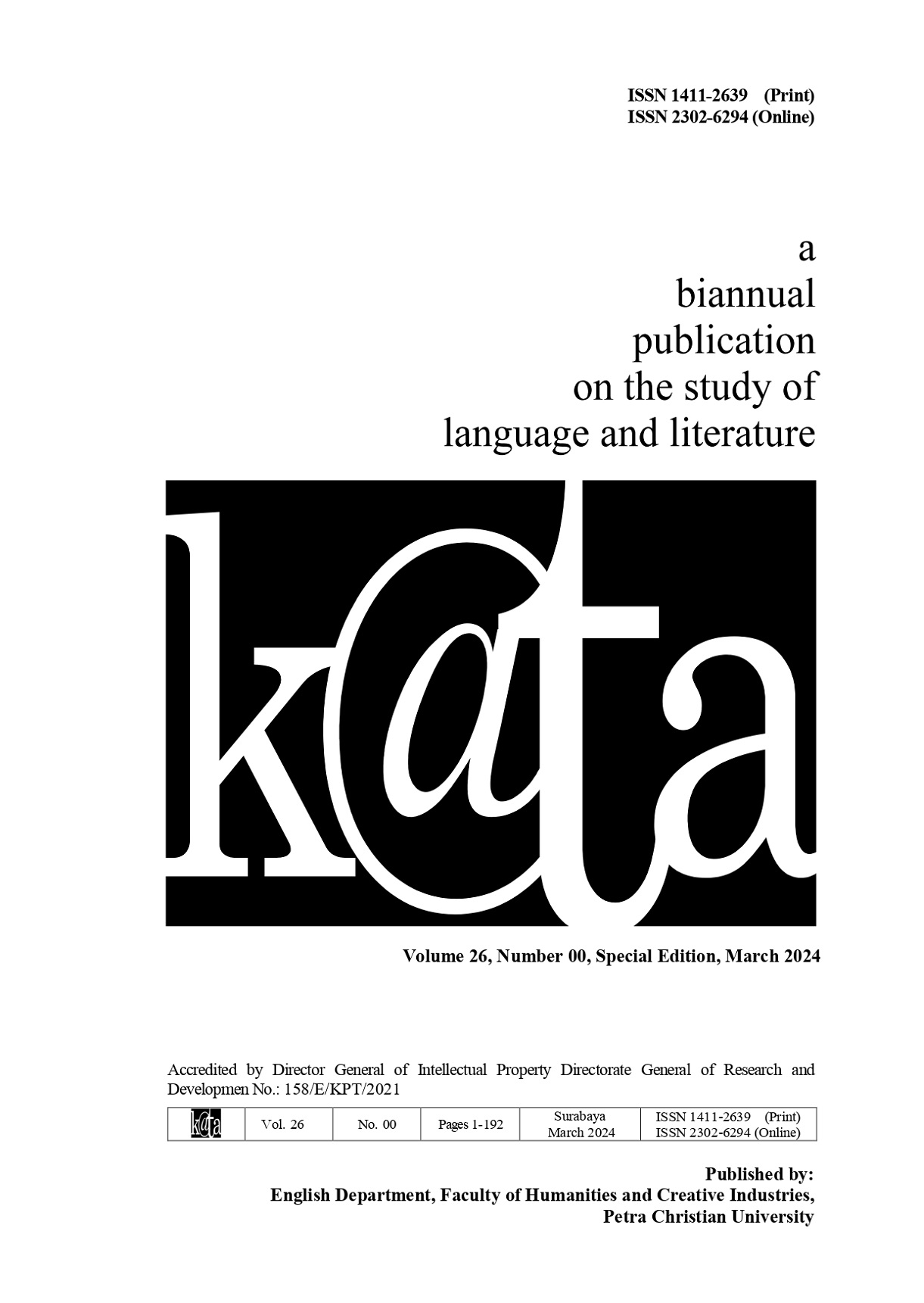The Position of Children's Characters in Children's Animation Postcolonialism Studies
Abstract
Children's literature has now begun to shift to digital media, known as children’s animation. Instead of children's literature being created for children, these works are written, edited and distributed by adults. This shows that adults (parents) have full power over the work that children will consume. Colonialism theory then questions what it means to write for children. This research appears with the real assumption of where the child is positioned in children’s cyber literature. The postcolonial approach is used to verify this assumption. The results show that children are treated as objects, a means to endure real problems faced by adults. It appears that writing for children in addition to exploring is also stuffing and imposing the will for the needs of adults: guiding children, training children through the process of reaching civilization which is again the power of adults to define it.
Downloads
References
Don D'Ammassa. (2005). Encyclopedia of science fiction. Facts on File, inc.
Foucault, M. (1972). The archeology of knowledge. Routledge.
Foucault, M. (1979). Discipline and punish the birth of the prison. Vintage books.
Galda, L. Ash, G.E, & Cullinan, B.E. (2000). Literature, Research on children's (Handbook o; Kamil & RML, Mosenthal, PB, Pearson, PD, & Barr, Eds.). Mahwah.
Gibson, W. (1984). Neuromancer. Routledge.
Hunt, P. (2016). A book review by Danny Yee © 2016. Danny Reviews. Retrieved from http://danny¬reviews.com/ .
Langer, B. (2002). Commodified enchantment: Chil¬dren and consumer capitalism. Eleven's Thesis, 69 (1), 67–81. https://doi.org/10.1177/0725513 602069001005
Nodelman, P. (1988). Literary theory and children's literature children 's literature as women' s writ¬ing. Children's Literature Association Quarterly, 13(1), 31–34.
Raina, S.A. (2010). Critical content analysis of post¬colonial texts: Representations of Muslims within children's and adolescent literature [Doctoral dissertation]. University of Arizona, Arizona, United States of America. Dissertation Abstracts International Section A: Humanities and Social Sciences, 70(11-A), 4215. Retrieved from http://ezproxy.library.uvic.ca/login?url=http://search.ebscohost.com/login. aspx? direct = true & db = psyh & AN = 2010-99091-139 & site = ehost-live & scope = site
Rokib, M. (2019). The polemics of digital literature in Indonesia. 380 (SoSHEC), 287–292.
Said, E. (1978). Orientalism. Pantheon.
Segal, E. (2016). Literary conceptualizations of growth: Metaphors and cognition in adolescent literature. Poetics Today, 37(1), 225–227. https://doi.org/10.1215/03335372-3453018
Social Blade. (2020). Best 250 videos for more kids in Indonesia. Retrieved from www.socialblade.com
Supriatin, Y.M. (2012). Cyber literary criticism. Journal of Sociotechnology, 11 (25), 47–54.
Thomas, E. (2019). Cyber stories in Malayalam literature. Journal of Chemical Information and Modeling, 53(9), 1689–1699. https://doi.org/10. 1017/CBO9781107415324.004
Viires, P. (2017). Literature in cyberspace. Folklore, 29(August 2005). https://doi.org/10.7592/FEJF 2005.29.cyberlit
White, M. & Marsh, E. (2013). A taxonomy of relationships between images and text. Journal of Documentation, 6 , 647–672.

This work is licensed under a Creative Commons Attribution 4.0 International License.
![]() This work is licensed under a Creative Commons Attribution License
This work is licensed under a Creative Commons Attribution License




.png)
.png)

.png)












